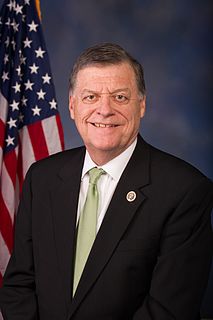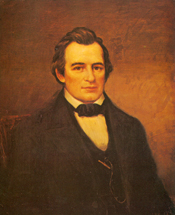Related Research Articles

The 14th United States Congress was a meeting of the legislative branch of the United States federal government, consisting of the United States Senate and the United States House of Representatives. It met in the Old Brick Capitol in Washington, D.C. from March 4, 1815, to March 4, 1817, during the seventh and eighth years of James Madison's presidency. The apportionment of seats in the House of Representatives was based on the Third Census of the United States in 1810. Both chambers had a Democratic-Republican majority.

The 21st United States Congress was a meeting of the legislative branch of the United States federal government, consisting of the United States Senate and the United States House of Representatives. It met in Washington, D.C. from March 4, 1829, to March 4, 1831, during the first two years of Andrew Jackson's presidency. The apportionment of seats in the House of Representatives was based on the Fourth Census of the United States in 1820. Both chambers had a Jacksonian majority.

The 22nd United States Congress was a meeting of the legislative branch of the United States federal government, consisting of the United States Senate and the United States House of Representatives. It met in Washington, D.C. from March 4, 1831, to March 4, 1833, during the third and fourth years of Andrew Jackson's presidency. The apportionment of seats in the House of Representatives was based on the Fourth Census of the United States in 1820. Both chambers had a Jacksonian majority.

The 23rd United States Congress was a meeting of the legislative branch of the United States federal government, consisting of the United States Senate and the United States House of Representatives. It met in Washington, D.C. from March 4, 1833, to March 4, 1835, during the fifth and sixth years of Andrew Jackson's presidency. The apportionment of seats in the House of Representatives was based on the Fifth Census of the United States in 1830. The Senate had an Anti-Jacksonian or National Republican majority, and the House had a Jacksonian or Democratic majority.

The 24th United States Congress was a meeting of the legislative branch of the United States federal government, consisting of the United States Senate and the United States House of Representatives. It met in Washington, D.C. from March 4, 1835, to March 4, 1837, during the seventh and eighth years of Andrew Jackson's presidency. The apportionment of seats in the House of Representatives was based on the Fifth Census of the United States in 1830. Both chambers had a Jacksonian majority.

The 26th United States Congress was a meeting of the legislative branch of the United States federal government, consisting of the United States Senate and the United States House of Representatives. It met in Washington, D.C. from March 4, 1839, to March 4, 1841, during the third and fourth years of Martin Van Buren's presidency. The apportionment of seats in the House of Representatives was based on the Fifth Census of the United States in 1830. Both chambers had a Democratic majority.

The 27th United States Congress was a meeting of the legislative branch of the United States federal government, consisting of the United States Senate and the United States House of Representatives. It met in Washington, D.C. between March 4, 1841, and March 4, 1843, during the one-month administration of U.S. President William Henry Harrison and the first two years of the presidency of his successor, John Tyler. The apportionment of seats in the House of Representatives was based on the Fifth Census of the United States in 1830. Both chambers had a Whig majority.

William McKendree Gwin was an American medical doctor and politician, serving in elected office in Mississippi and California. In California he shared the distinction, along with John C. Frémont, of being the state's first US senators. Before, during, and after the Civil War, Gwin was well known in California; Washington, DC; and in the South as a determined Confederate sympathizer.

The 32nd United States Congress was a meeting of the legislative branch of the United States federal government, consisting of the United States Senate and the United States House of Representatives. It met in Washington, D.C. from March 4, 1851, to March 4, 1853, during the last two years of Millard Fillmore's presidency. The apportionment of seats in the House of Representatives was based on the Sixth Census of the United States in 1840. Both chambers had a Democratic majority.

Thomas Jeffery Cole is the U.S. Representative for Oklahoma's 4th congressional district, serving since 2003. He is a member of the Republican Party serving as Deputy Minority Whip. The chairman of the National Republican Congressional Committee (NRCC) from 2006 to 2008, he was, during his tenure, the fourth-ranking Republican leader in the House. Cole – a member of the Chickasaw Nation – is one of only four registered Native Americans in Congress, the others being fellow Oklahoma Republican Markwayne Mullin and Democrats Sharice Davids of Kansas and Deb Haaland of New Mexico.

The 73rd United States Congress was a meeting of the legislative branch of the United States federal government, composed of the United States Senate and the United States House of Representatives. It met in Washington, D.C. from March 4, 1933, to January 3, 1935, during the first two years of Franklin D. Roosevelt's presidency. Because of the newly ratified 20th Amendment, the duration of this Congress, along with the term of office of those elected to it, was shortened by the interval between January 3 and March 4, 1935. The apportionment of seats in the House of Representatives was based on the Fifteenth Census of the United States in 1930. Both chambers had a Democratic majority.

The 39th United States Congress was a meeting of the legislative branch of the United States federal government, consisting of the United States Senate and the United States House of Representatives. It met in Washington, D.C. from March 4, 1865, to March 4, 1867, during the first month of Abraham Lincoln's fifth year as president, and the first two years of the administration of his successor, U.S. President Andrew Johnson.

The 33rd United States Congress was a meeting of the legislative branch of the United States federal government, consisting of the United States Senate and the United States House of Representatives. It met in Washington, D.C. from March 4, 1853, to March 4, 1855, during the first two years of the administration of U.S. President Franklin Pierce. During this session, the Kansas–Nebraska Act was passed, an act that soon led to the creation of the Republican Party. The apportionment of seats in the House of Representatives was based on the Seventh Census of the United States in 1850. Both chambers had a Democratic majority.

The 41st United States Congress was a meeting of the legislative branch of the United States federal government, consisting of the United States Senate and the United States House of Representatives. It met in Washington, D.C. from March 4, 1869, to March 4, 1871, during the first two years of Ulysses S. Grant's presidency. The apportionment of seats in the House of Representatives was based on the Eighth Census of the United States in 1860. Both chambers had a Republican majority.

The 45th United States Congress was a meeting of the legislative branch of the United States federal government, consisting of the United States Senate and the United States House of Representatives. It met in Washington, D.C. from March 4, 1877, to March 4, 1879, during the first two years of Rutherford Hayes's presidency. The apportionment of seats in the House of Representatives was based on the Ninth Census of the United States in 1870. The Senate had a Republican majority, and the House had a Democratic majority.

Elections to the United States House of Representatives for the 26th Congress were held during President Martin Van Buren's term at various dates in different states from July 1838 to November 1839.

The Frazier–Lemke Farm Bankruptcy Act was an Act of Congress passed in the United States in 1934 that restricted the ability of banks to repossess farms.

The American Research and Competitiveness Act of 2014 is a bill that would amend the Internal Revenue Code to modify the calculation method and the rate for the tax credit for qualified research expenses that expired at the end of 2013 and would make that modified credit permanent.
The SAFE Banking Act is proposed legislation regarding disposition of funds gained through the cannabis industry in the United States. On March 7, 2019, the bill was introduced in U.S. House of Representatives by Ed Perlmutter (D-CO) and was referred to the Judiciary and Financial Services Committees. On March 28, 2019, the Financial Services Committee voted 45 to 15 to advance the bill to the full House. The bill had "broad bipartisan support", and there were 152 cosponsors at the time of the committee vote – over a third of the entire House. Perlmutter, along with Washington Representative Denny Heck, "have introduced similar bills every Congress since 2013". On April 11, 2019, Oregon Senator Jeff Merkley introduced a companion bill in the U.S. Senate and the bill was referred to the Senate Banking, Housing, and Urban Affairs Committee. On June 6, 2019, the House bill moved out of committee and was placed on the Union Calendar for a vote.
References
- 1 2 Walter Stubbs (1985), Congressional Committees, 1789-1982: A Checklist, Greenwood Press, p. 4
- 1 2 U.S. House Journal. 27th Congress, 2nd session. 7 January 1842, 131
- ↑ U.S. House of Representatives. H. rpt. 553. 27th Congress, 2nd session. 9 April 1842.
- 1 2 H.R. 345, A Bill For the relief of the president, directors, and company of the Agricultural Bank of Mississippi, 27th Congress.
- ↑ U.S. House Journal. 27th Congress, 2nd session. 9 April 1842, 679-680
- ↑ U.S. House Journal. 27th Congress, 2nd session. 25 June 1842, 1013
- ↑ U.S. Senate Journal. 27th Congress, 2nd session. 11 August 1842, 566
- ↑ 6 Stat. 861